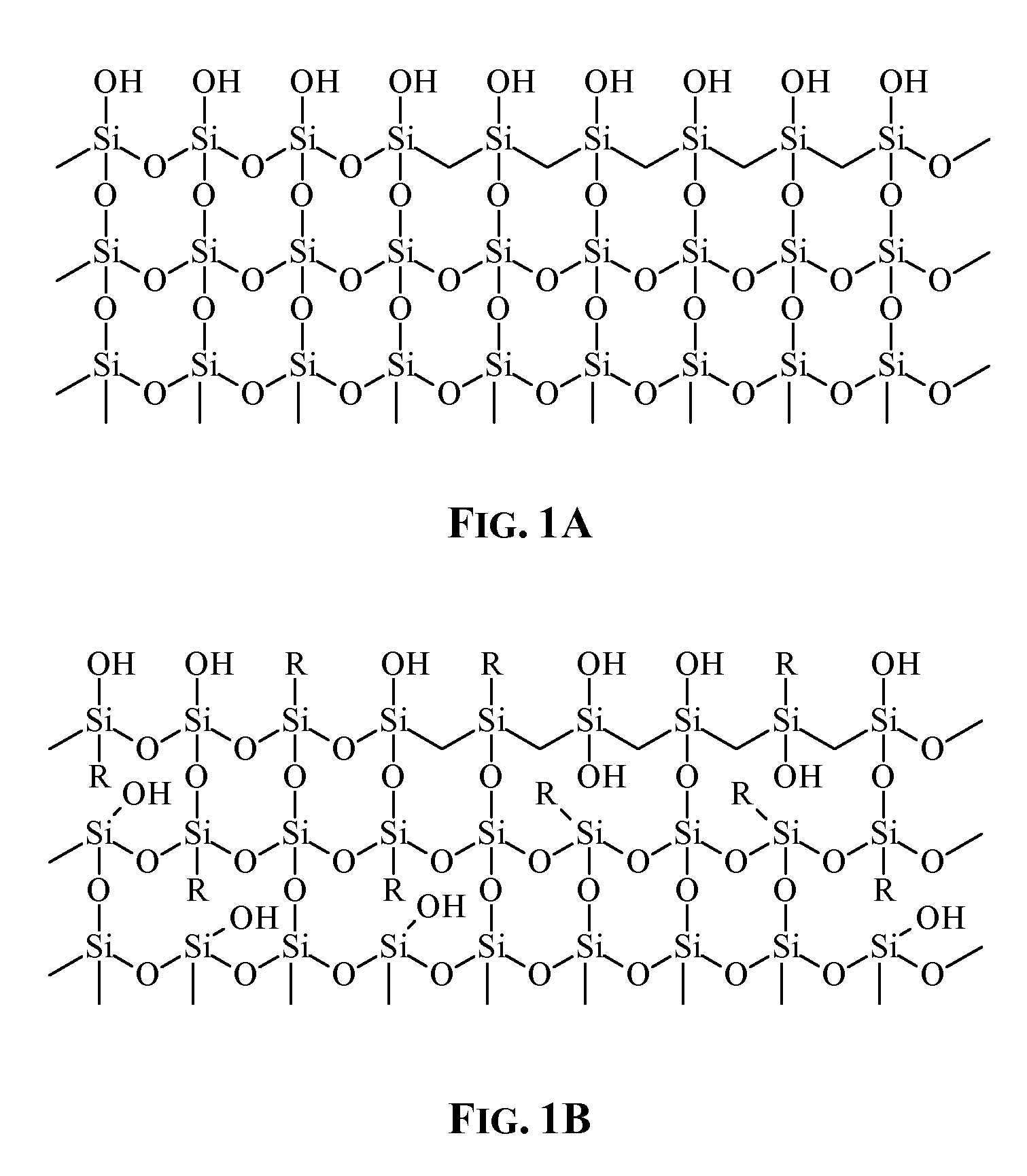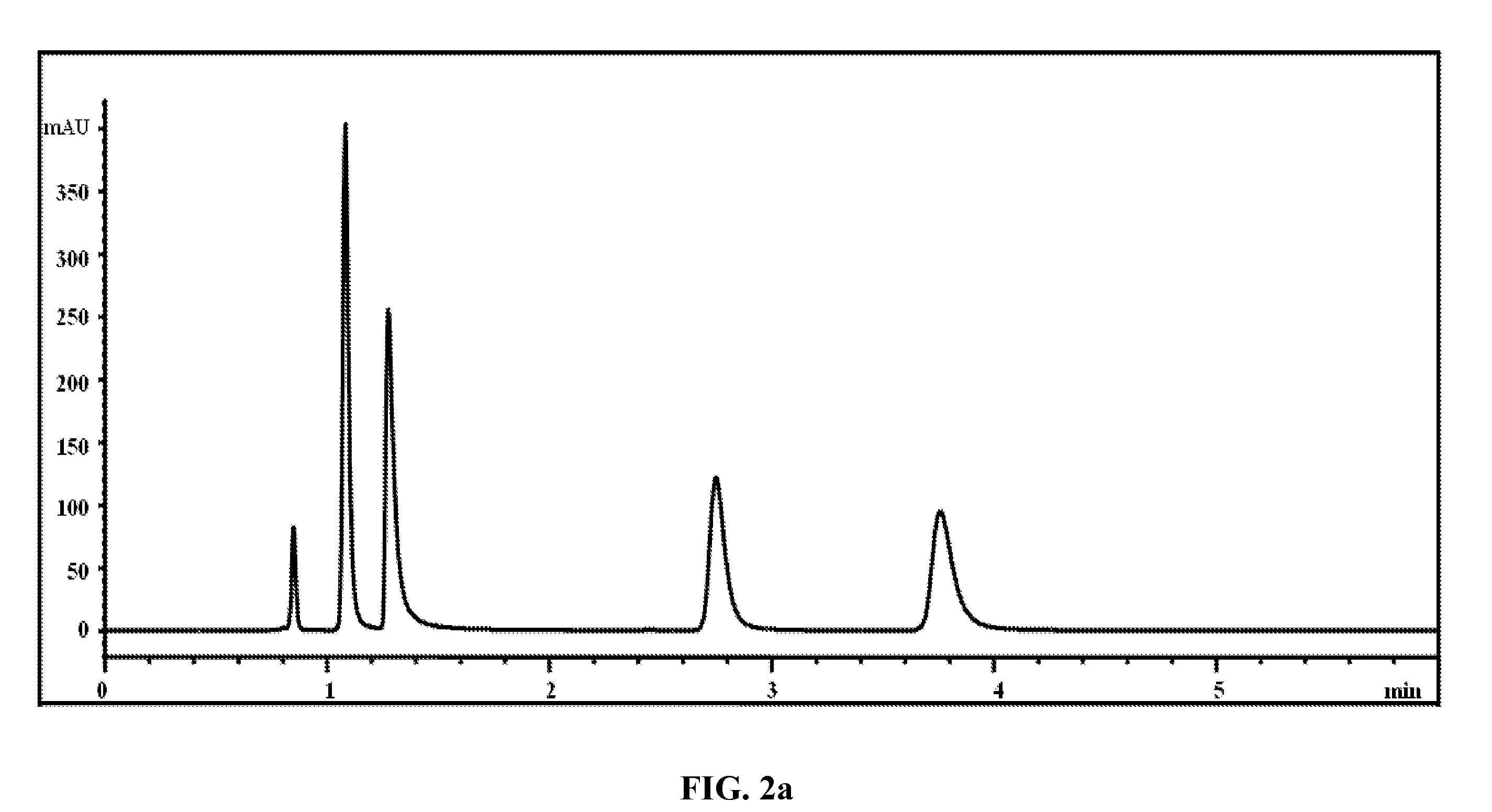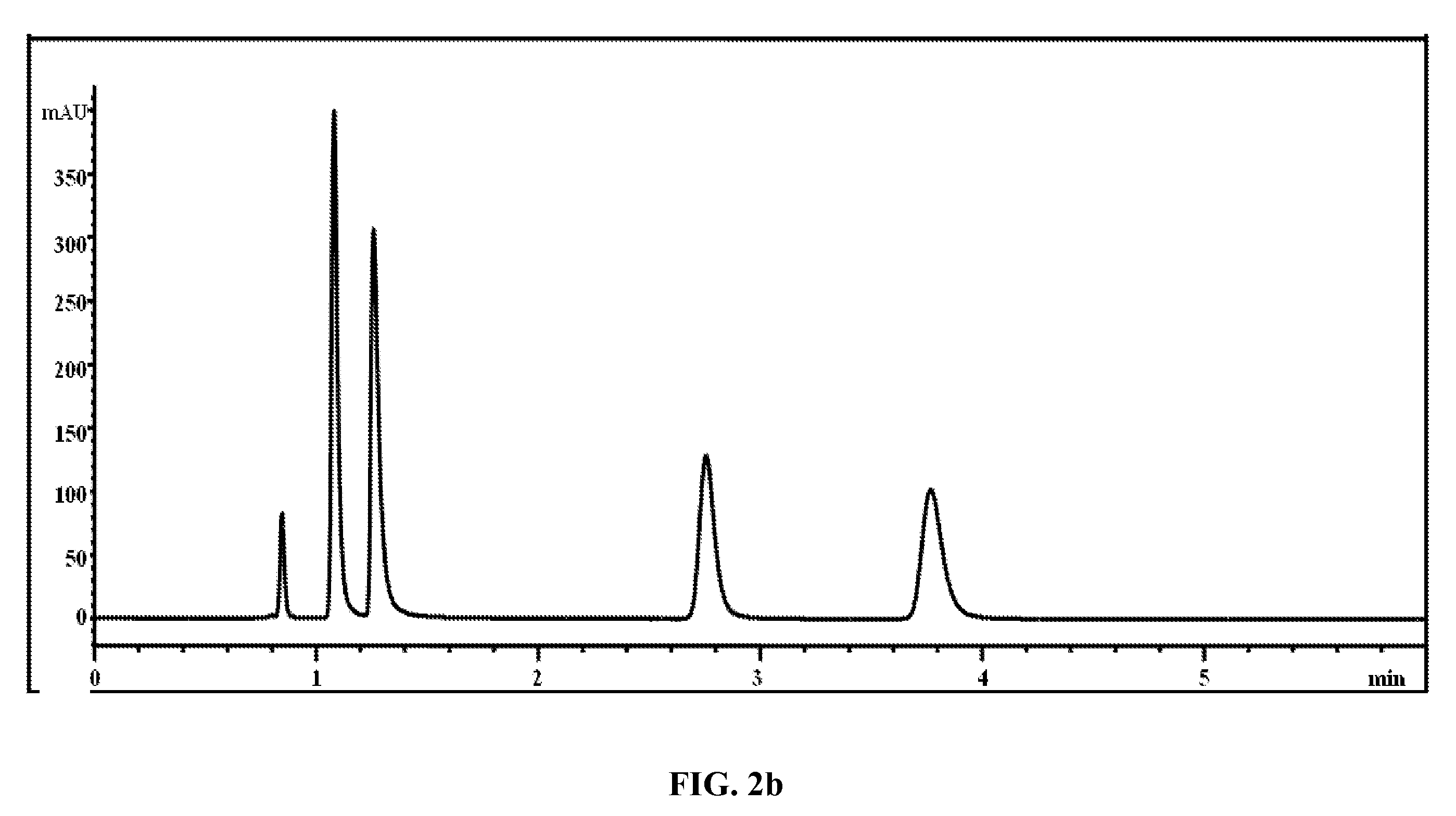Porous silica microspheres having organosilane modified surfaces
- Summary
- Abstract
- Description
- Claims
- Application Information
AI Technical Summary
Benefits of technology
Problems solved by technology
Method used
Image
Examples
example 1
[0090]In a first example, 5 μm Rx80 silica particles from Agilent Technologies, with a surface area of 189 m2 / g and a pore size of 80 Å were directly bonded with Eclipse Plus C18 silane (Agilent Technologies, Inc.). The resulting particles were endcapped using conventional processes known in the art.
example 2
[0091]In a second example, the silica used in Example 1 was surface-modified in 400 ppm HF and 1,2-bis(triethoxysilyl)ethane solution. 40 g of 5 μm Rx80 silica particles were slurried in 400 ml of a 400 ppm HF solution in a round bottom flask equipped with a condenser. To this solution, 1 gram of 1,2-bis(triethoxysilyl)ethane was added and the mixture was refluxed for 24 hours. The mixture was then allowed to cool to room temperature and settle overnight. The top water layer was decanted, and 400 ml of water was added. The slurry was heated again to reflux for 24 hours. The mixture was then allowed to cool to room temperature and settle overnight. 400 ml of acetone was then added and slurried with the silica. The resulting silica particles were filtered, washed with acetone, and dried in a vacuum oven at 100° C. for at least 2 hours. The carbon loading was measured to be 0.30% by elemental analysis.
example 3
[0092]In a third example, 40 g of 5 μm Rx80 silica particles with a surface area 189 m2 / g and a pore size of 80 Å were processed according to Example 2, except that 2 g instead of 1 g of 1,2-bis(triethoxysilyl)ethane were included in the slurry. The carbon loading was measured to be 0.89% by elemental analysis.
[0093]Referring to Table 1, below, the particle size and pore size, as measured by BET N2 adsorption, did not change significantly after surface modification; however, the elemental analysis results demonstrate that the organic hydrocarbon is incorporated into the surface. The HPLC columns based on silica particles with organic groups incorporated into the surface show improved peak shapes for strong bases. With organic groups on the surface, the pH stability of such columns should also be improved as compared to the silica particles without any modification.
TABLE 1SurfacePorePoreOrganosilane toCarbon loadingareasizevolumesilica weight ratioafter HF(m2 / g)(Å)(cm3 / g)No further H...
PUM
| Property | Measurement | Unit |
|---|---|---|
| Temperature | aaaaa | aaaaa |
| Diameter | aaaaa | aaaaa |
| Volume | aaaaa | aaaaa |
Abstract
Description
Claims
Application Information
 Login to View More
Login to View More - R&D
- Intellectual Property
- Life Sciences
- Materials
- Tech Scout
- Unparalleled Data Quality
- Higher Quality Content
- 60% Fewer Hallucinations
Browse by: Latest US Patents, China's latest patents, Technical Efficacy Thesaurus, Application Domain, Technology Topic, Popular Technical Reports.
© 2025 PatSnap. All rights reserved.Legal|Privacy policy|Modern Slavery Act Transparency Statement|Sitemap|About US| Contact US: help@patsnap.com



